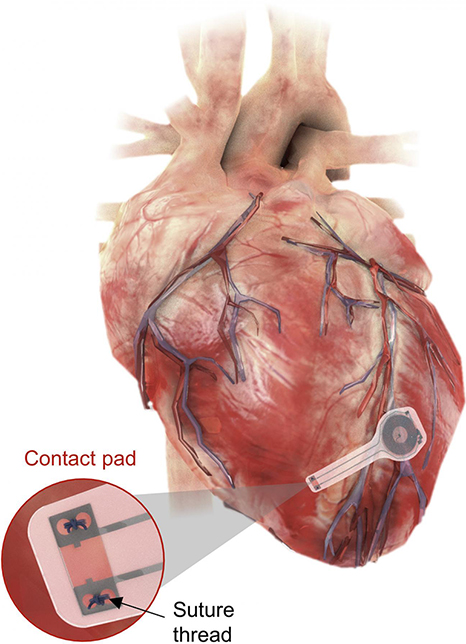
Researchers at Northwestern University and collaborators have developed a temporary cardiac pacemaker that dissolves away in the body into harmless byproducts. The technology avoids the need for leads penetrating the skin as well as follow-up procedures to remove a pacemaker. The device could make temporary pacemaker placement a safer and more convenient experience for patients.
Patients frequently need temporary pacemakers, including after cardiac surgery. Typically, such devices are not wireless, but require electrical cables to penetrate through an incision, causing an infection risk. “Sometimes patients only need pacemakers temporarily, perhaps after an open heart surgery, heart attack or drug overdose,” said Rishi Arora, a researcher involved in the study, in a Northwestern announcement. “After the patient’s heart is stabilized, we can remove the pacemaker. The current standard of care involves inserting a wire, which stays in place for three to seven days. These have potential to become infected or dislodged.”
This new technology is wireless and battery-free and can safely be sealed into the body, with no need for later removal. “Hardware placed in or near the heart creates risks for infection and other complications,” said John A. Rogers, another researcher involved in the study. “Our wireless, transient pacemakers overcome key disadvantages of traditional temporary devices by eliminating the need for percutaneous leads for surgical extraction procedures – thereby offering the potential for reduced costs and improved outcomes in patient care. This unusual type of device could represent the future of temporary pacing technology.”
The new pacemaker is thin and flexible, and the current iteration lasts for approximately 5–7 weeks before breaking down into biocompatible byproducts that are eventually excreted by the body. However, the researchers can tweak the formulation and structure of the device to precisely control how long it takes to degrade, potentially allowing for customized devices for different patients. The new implant is battery-free, and is powered through an external antenna, using similar technology that smartphones use to make electronic payments.
“We build these devices out of different types of safe, bioresorbable materials and in optimized architectures to ensure stable operation over a time period somewhat longer than is clinically necessary,” said Rogers. “We can tailor the devices to address a broad spectrum of relevant lifetimes. Transient technologies, in general, could someday provide therapy or treatment for a wide variety of medical conditions – serving, in a sense, as an engineering form of medicine.”
See a video of the device degradation below.
Study in Nature Biotechnology: Fully implantable and bioresorbable cardiac pacemakers without leads or batteries
Flashbacks: Flexible Electronic Heart Wrap for Continuous 3D Electrocardiac Monitoring; Dissolvable “Transient Electronics” Will Be Good For Your Body and the Environment; Soft Electronics for Advanced Heart Catheters
